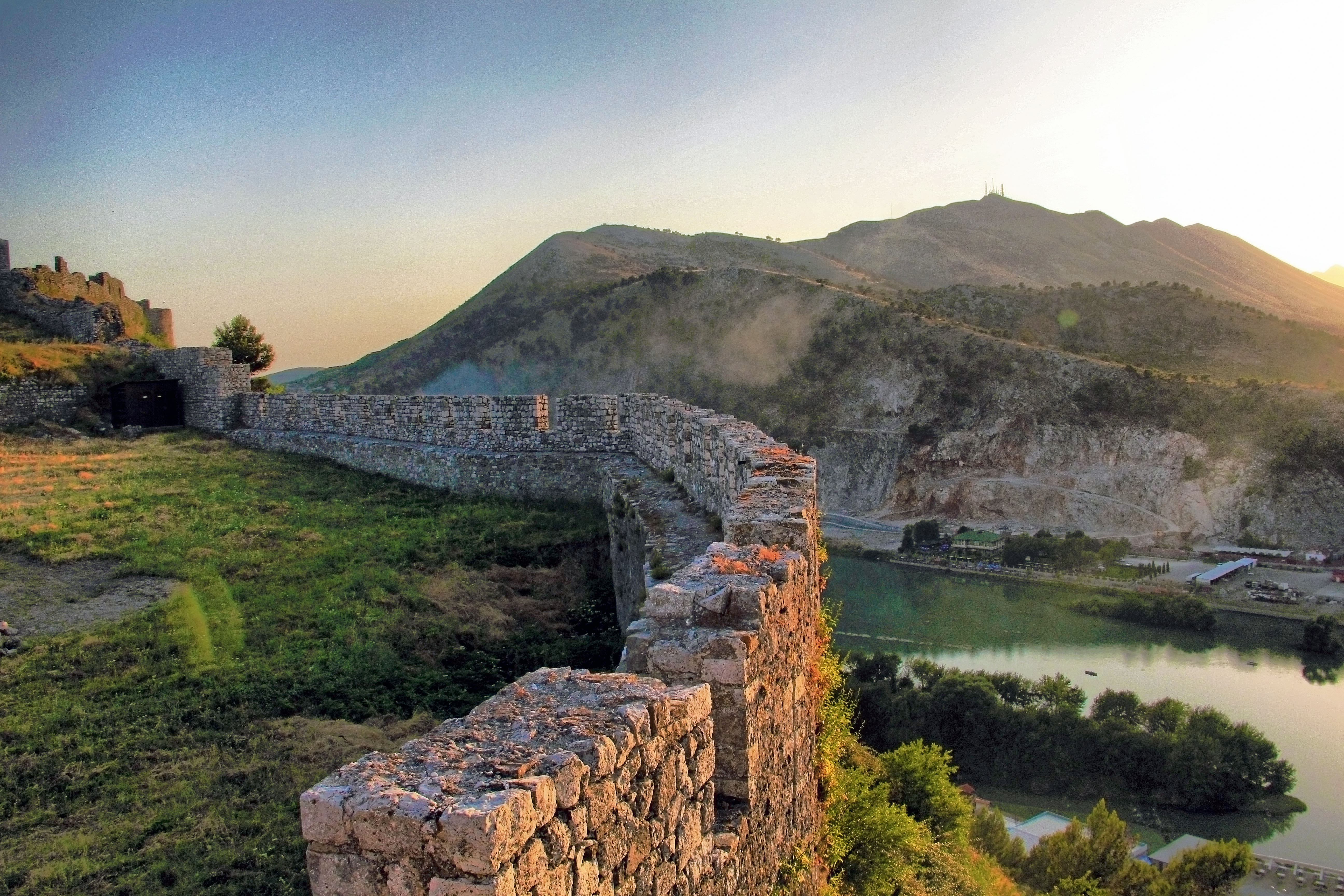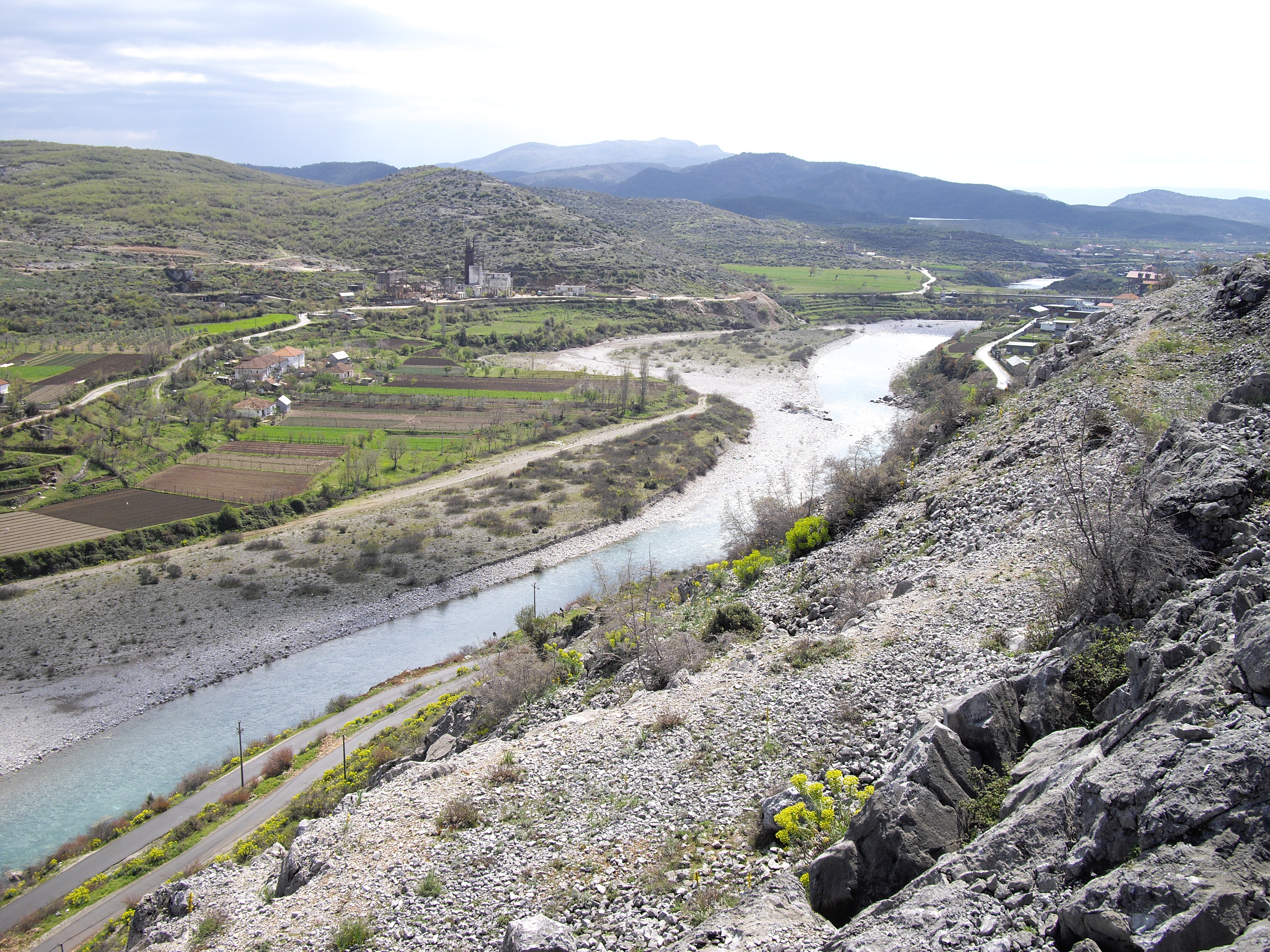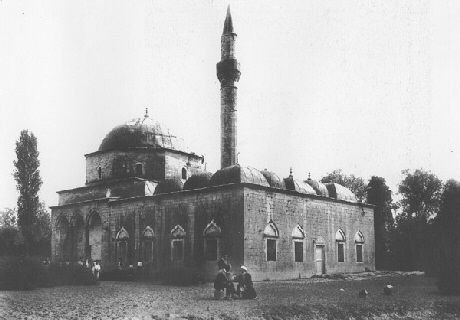|
Mes, Albania
Mes (; sq-definite, Mesi) is a village in the former municipality of Postribë in Shkodër County, Albania. At the 2015 local government reform it became part of the municipality of Shkodër. Mesi Bridge The village is most famous for the Mesi Bridge over the river Kir, a designated Category I cultural monument of Albania. It is stone bridge constructed in 1768 by Mehmed Pasha Bushati during the Pashalik period in Ottoman Albania Ottoman Albania was a period in History of Albania, Albanian history within the Ottoman Empire, from the Ottoman conquest in the late 15th century to the Albanian Declaration of Independence, Albanian declaration of Independence and official s ..., and is the biggest of its kind in Albania still intact, measuring 108m in length. References {{Shkodër div Populated places in Shkodër Villages in Shkodër County ... [...More Info...] [...Related Items...] OR: [Wikipedia] [Google] [Baidu] |
Shkodër
Shkodër ( , ; sq-definite, Shkodra; historically known as Scodra or Scutari) is the List of cities and towns in Albania, fifth-most-populous city of Albania and the seat of Shkodër County and Shkodër Municipality. Shkodër has been List of oldest continuously inhabited cities, continuously inhabited since the Early Bronze Age ( 2250–2000 BC), and has roughly 2,200 years of recorded history. The city sprawls across the Plain of Mbishkodra between the southern part of Lake Skadar, Lake Shkodër and the foothills of the Albanian Alps on the banks of the Buna (Adriatic Sea), Buna, Drin (river), Drin and Kir (river), Kir rivers. Due to its proximity to the Adriatic Sea, Shkodër is affected by a seasonal Mediterranean climate with Continental climate, continental influences. An urban settlement called ''Skodra'' was founded by the Illyrians, Illyrian tribe of Labeatae in the 4th century BCE. It became the capital of the Illyrian kingdom under the Ardiaei and Labeatae and was one ... [...More Info...] [...Related Items...] OR: [Wikipedia] [Google] [Baidu] |
Postribë
Postribë is a former municipality in the Shkodër County, northwestern Albania. At the 2015 local government reform it became a subdivision of the municipality Shkodër. The population at the 2011 census was 7,069.2011 census results It includes the village of Urë e Shtrenjtë. It contains three Bajraks, those being Boks, Drisht
Drisht ( sq-definite, Drishti) is a village, former bishopric and Latin titular see ( Roman Catholic Diocese of Drivasto) with an Ancient and notable medieval history (Latin ''Drivastum,'' Italian ''Drivasto'') in Albania, 6 km from Mesi Bri ... ...
[...More Info...] [...Related Items...] OR: [Wikipedia] [Google] [Baidu] |
Municipalities Of Albania
Municipalities ( or ) are the second-level administrative divisions of Albania, below the counties and above the communes. Since the most recent administrative reforms in 2014, Albania has 61 municipalities. History Municipalities are considered the basic administrative division of Albania. Since its Declaration of Independence from the Ottoman Empire in 1912, Albania has reorganized internal administration 21 times. From independence until the year 2000, regional government was organized into regions () of varying numbers, size, and importance. They were consolidated into groups comprising 12 counties in 1991. Following the 1998 constitutional reforms, the 36 regions of the time were abolished entirely and replaced by the larger counties and two kinds of municipalities: urban municipalities () and rural ones (). In 2014, this was revised to reduce the number of urban municipalities to 61 and extended their jurisdiction over the surrounding countryside to create region ... [...More Info...] [...Related Items...] OR: [Wikipedia] [Google] [Baidu] |
Shkodër County
Shkodër County () is a county in northwestern Albania, with the capital in Shkodër. The county spans and had a total population of 154,479 people as of the 2023 census. The county borders on the counties of Lezhë, Kukës and the country of Montenegro. The county consists of five municipalities: Fushë-Arrëz, Malësi e Madhe, Pukë, Shkodër and Vau i Dejës. During the Bronze Age, the area was inhabited by various Illyrian tribes such as the Ardiaeis and Labeataes. Illyria was annexed by Rome in the second century BC, becoming an integral part of the Roman Empire and its successor the Byzantine Empire. Falling under Venetian and Ottoman dominion in the late Middle Ages, the modern nation state of Albania emerged in 1912 following its independence. The climate of the county is profoundly affected by the Adriatic Sea in the west and the Albanian Alps in the north. It experiences mostly mediterranean climate, while the north enjoys continental climate. The summers a ... [...More Info...] [...Related Items...] OR: [Wikipedia] [Google] [Baidu] |
Albania
Albania ( ; or ), officially the Republic of Albania (), is a country in Southeast Europe. It is located in the Balkans, on the Adriatic Sea, Adriatic and Ionian Seas within the Mediterranean Sea, and shares land borders with Montenegro to the northwest, Kosovo to the northeast, North Macedonia to the east and Greece to the south. With an area of , it has a varied range of climatic, geological, hydrological and morphological conditions. Albania's landscapes range from rugged snow-capped mountains in the Accursed Mountains, Albanian Alps and the Korab, Central Mountain Range, Albania#Skanderbeg Mountains, Skanderbeg, Pindus and Ceraunian Mountains, to fertile lowland plains extending from the Albanian Adriatic Sea Coast, Adriatic and Albanian Ionian Sea Coast, Ionian seacoasts. Tirana is the capital and largest city in the country, followed by Durrës, Vlorë, and Shkodër. Albania was inhabited by several List of Illyrian peoples and tribes, Illyrian tribes, among them the A ... [...More Info...] [...Related Items...] OR: [Wikipedia] [Google] [Baidu] |
Kir (river)
The Kir ( or ''Kiri'') is a river in northern Albania that first flows south-southwest and then southwest out of the North Albanian Alps and enters a distributary of the Drin just below Shkodër Shkodër ( , ; sq-definite, Shkodra; historically known as Scodra or Scutari) is the List of cities and towns in Albania, fifth-most-populous city of Albania and the seat of Shkodër County and Shkodër Municipality. Shkodër has been List of o .... In the upper reaches the river cuts the "Canyon of the Kir" with dramatic cliffs.The Albanian tribe or ''fis'' of Kiri inhabited this area. Just outside Shkodër, in Mes, the old stone Mes Bridge crosses the Kir. Notes External links *Static image *Static image Rivers of Albania Geography of Shkodër County {{Albania-river-stub ... [...More Info...] [...Related Items...] OR: [Wikipedia] [Google] [Baidu] |
Cultural Monument Of Albania
In Albania, a cultural monument () is a construction or work of cultural, historical and artistic value that is built in a visible space, made in memory of important events or prominent people. Cultural monuments are usually under state protection as they are evidence of the history of human development, for the preservation of which there is a public interest. Definition Law nr.9048, dated 04.07.2003, titled ''"For Cultural Heritage"'' describes a cultural monument as an object or building with historical-cultural value that is protected by the state. Cultural monuments are classified into two categories: Category I Cultural Monuments of the first category are buildings of significant value and importance for cultural heritage. They are preserved in the balance of their architectural and technical components. The volume composition, the architectural treatment of the external and internal views, as well as the planimetric and functional solution of these monuments cannot be change ... [...More Info...] [...Related Items...] OR: [Wikipedia] [Google] [Baidu] |
Mehmed Pasha Bushati
Mehmed Bushati () was the governor of the Pashalik of Scutari and founder of the Bushati family, Bushatli dynasty of Shkodër History Sanjak of Scutari In 1768, Mehmed Pasha became the governor of the pashalik of Scutari. In 1769, he fought in Zadrima. In 1770, he fought in Morea against Greeks and Russians, and in 1772 he and his son participated in the march on Ulcinj. He continued the Scutari pretensions over Montenegro and Brda, and planned to suppress their revolt; in early April 1774, he was in Podgorica and met with some chieftains of the northern Albanian tribes to discuss the planned operation. In 1774, in the same month of the death of Šćepan Mali, he attacked the Kuči and Bjelopavlići with 15,000 troops, but was decisively defeated and returned to Scutari. This campaign had a great impact on the Kuči tribe which was described as "destroyed". Rivalry with Ahmet Kurt Pasha In 1775, Mehmed's son, Kara Mahmud Pasha, led an Army against Ahmet Kurt Pasha and defeated ... [...More Info...] [...Related Items...] OR: [Wikipedia] [Google] [Baidu] |
Pashalik Of Scutari
The Pashalik of Scutari (1757–1831), also known as the Bushati Pashalik, was an Albanian pashalik within the Ottoman Empire that was ruled by the Bushati family. Its capital was Shkodër and ruled areas in modern-day Albania and large majority of modern-day Montenegro. At its peak, during the reign of Kara Mahmud Bushati, the pashalik encompassed much of Albania and Kosovo, western Macedonia, southeastern Serbia, and most of Montenegro. Up to 1830, the Pashalik of Shkodra controlled most of the aforementioned lands (including southern Montenegro). Background The weakening of Ottoman central authority and the ''timar'' system of land ownership brought anarchy to the Albanian-populated region of the Ottoman empire. In the late eighteenth century, two Albanian centers of power emerged: Shkodër, under the Bushati family; and Janina, under Ali Pasha of Tepelenë. Both regions cooperated with and defied the Sublime Porte as their interests required. History The influence of ... [...More Info...] [...Related Items...] OR: [Wikipedia] [Google] [Baidu] |
Albania Under The Ottoman Empire
Ottoman Albania was a period in Albanian history within the Ottoman Empire, from the Ottoman conquest in the late 15th century to the Albanian declaration of Independence and official secession from the Ottoman Empire in 1912. The Ottomans first entered Albania in 1385 upon the invitation of the Albanian noble Karl Thopia to suppress the forces of the noble Balša II during the Battle of Savra. They had some previous influence in some Albanian regions after the battle of Savra in 1385 but not direct control. The Ottomans placed garrisons throughout southern Albania by 1420s and established formal jurisdiction in central Albania by 1431. Even though The Ottomans claimed rule of all Albanian lands, most Albanian ethnic territories were still governed by medieval Albanian nobility who were free of Ottoman rule. The Sanjak of Albania was established in 1420 or 1430 controlling mostly central Albania, while Ottoman rule became more consolidated in 1481, after the fall of Shkodr ... [...More Info...] [...Related Items...] OR: [Wikipedia] [Google] [Baidu] |
Populated Places In Shkodër
Population is a set of humans or other organisms in a given region or area. Governments conduct a census to quantify the resident population size within a given jurisdiction. The term is also applied to non-human animals, microorganisms, and plants, and has specific uses within such fields as ecology and genetics. Etymology The word ''population'' is derived from the Late Latin ''populatio'' (a people, a multitude), which itself is derived from the Latin word ''populus'' (a people). Use of the term Social sciences In sociology and population geography, population refers to a group of human beings with some predefined feature in common, such as location, race, ethnicity, nationality, or religion. Ecology In ecology, a population is a group of organisms of the same species which inhabit the same geographical area and are capable of interbreeding. The area of a sexual population is the area where interbreeding is possible between any opposite-sex pair within the area ... [...More Info...] [...Related Items...] OR: [Wikipedia] [Google] [Baidu] |






